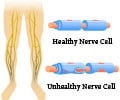Inotersen Medication Information
Discover comprehensive details about Inotersen, including its pronunciation, uses, dosage instructions, indications, and guidelines on how and when to take it or avoid it.
The updated prescription information covers potential side effects, precautions, warnings, and storage recommendations.
Additionally, explore the Inotersen brands available in India and internationally, along with pricing information. For personalized advice, consult your healthcare provider.
Generic Name : Inotersen Pronunciation : IN-oh-TER-sen Therapeutic Classification : MiscellaneousBrand Names or Trade Names of Inotersen
India :
Tegsedi
Why is Inotersen Prescribed? (Indications)
Inotersen is prescribed to treat severe nerve damage or polyneuropathy which is at stage 1 or 2 in adult patients with hereditary transthyretin-mediated amyloidosis (hATTR).Inotersen is an antisense oligonucleotide agent and the world’s first RNA-targeting drug that works by reducing the production of the disease-causing human transthyretin (TTR) protein.
Hereditary transthyretin amyloidosis is a very rare disease affecting 50,000 patients worldwide that runs in families with a specific gene alteration and affects the tissues of the heart, kidneys, and the nervous system.
When should Inotersen not be taken? (Contraindications)
Inotersen should not be used in patients-• If there is an allergy to inotersen
• With a history of severe thrombocytopenia
• Whose kidney or liver are extremely damaged
• Who are aged below 18
Pregnant women and breastfeeding mothers must be carefully observed for any unusual symptoms or signs when treated with an inotersen injection.
What is the dosage of Inotersen?
The recommended adult dose of inotersen is 284 mg given once every week.The dose of inotersen can be adjusted or modified if the patient experiences a low platelet count.
No dose adjustment is needed if the inotersen injection is given to patients with mild to moderate liver or kidney damage.
How should Inotersen be taken?
Inotersen injection is available as a prefilled syringe and should be given subcutaneously or just under the skin.Inotersen prefilled syringe is intended for single use and must be used only once.
Initially, the injection should be given by a trained health care provider, and the patient or the caregiver can be trained for taking or giving further injections in the schedule.
The injection sites include the outer area of the upper arm, upper thigh, and the abdomen and it is necessary to rotate the sites for injection to avoid repeated injury.
Inotersen injection should not be given around the waistline and in places where there are constant rubbing or pressure from the clothes.
Do not inject inotersen into the area that is 2 inches around the belly button, into inflamed, bruised, and damaged skin areas or into any tattooed skin or moles or scars.
Inotersen injections should be visually checked for the presence of visible matter or cloudy or precipitated solution before injecting and should be discarded if such abnormalities are found.
Missed a Dose?
Patients should be advised to take the missed dose as soon as possible if the next dose is scheduled after two days.If the next scheduled dose is within two days, patients should be advised not to take the missed dose of inotersen and take the next scheduled dose as prescribed.
What are the warnings and precautions for Inotersen?
•Patients given inotersen injections must be monitored for the following parameters during the treatment with inotersen and 8 weeks after taking the last dose of inotersen.• Platelet count
• Serum creatinine level
• Estimated glomerular filtration rate
• Levels of liver enzymes (ALT & AST)
• Total bilirubin
• Complete urine analysis
Inotersen injection can cause a reduction in platelet count. In such cases, the treatment can be stopped until the platelet count improves. Steroid therapy is recommended in low platelet counts but do not use inotersen in patients who can take steroids.
A decrease in kidney function can occur during inotersen therapy and treatment can be stopped if glomerulonephritis and other kidney toxicities occur.
Inotersen may result in stroke and blood vessel problems. Therefore patients must be educated about understanding the symptoms and signs of stroke and a condition called arterial dissection involving a tear in the lining of the arteries of the brain or the spinal cord.
Patients should be evaluated for liver function particularly for the levels of liver enzymes (ALT, AST) and total bilirubin every four months during inotersen therapy.
Monitoring patients for the symptoms and signs of liver dysfunction is required, and treatment with inotersen can be discontinued if any liver abnormalities are confirmed. Those patients need appropriate treatment under the supervision of proper medical personnel.
Inotersen treatment can result in low levels of vitamin A and the patient must be provided with adequate supplementation of vitamin A. Patients who have any symptoms and signs of night blindness or vitamin A deficiency must be referred to an eye specialist.
Hypersensitivity or allergic reactions such as flu-like symptoms, headache, high blood pressure, chest pain, and restricted movements can occur just within 2 hours of starting the treatment with inotersen. In such cases, stop inotersen therapy and treat accordingly.
What are the side effects of Inotersen?
Gastrointestinal: Nausea, vomiting, reduced appetite, dry mouthNervous system: Headache, fever, abnormal weakness
Cardiovascular: Abnormal heart rhythm, swelling of the hands and foot or ankles, reduction in blood pressure while standing suddenly from a sitting or lying position
Respiratory: Breathing difficulty, flu-like symptoms
Skin: Injection site reactions such as rashes, redness, pain, and swelling
Lab abnormalities: Abnormal levels of hemoglobin, platelets, liver enzymes, bilirubin, creatinine, and glomerular filtration rate
Others: Muscle pain, contusion or bruising, bacterial infections
What are the other precautions for Inotersen?
Inotersen prefilled syringes should be removed from the refrigerator and kept outside to come to room temperature for a minimum of 30 minutes before injecting.Do not drop in hot water or place in a microwave oven with the intention of warming the prefilled syringe.
Patients must be encouraged to actively get involved in the REMS (Risk Evaluation and Mitigation Strategy) program and should inform the doctor if any side effects occur.
Participating in all monitoring programs to detect the risk of bleeding disorders or kidney damage is also advised.
What are the Drug Interactions of Inotersen?
Extreme caution is required when inotersen is given along with blood thinners such as clopidogrel, warfarin and non-prescription drugs such as aspirin or other painkillers as these combinations may increase the risk of bleeding.Avoid using drugs that cause kidney damage such as aminoglycoside agents (amikacin, gentamycin), sulfa drugs, lithium, penicillin group antibiotics, ciprofloxacin, rifampin, cyclosporine and antiviral drugs (acyclovir, ganciclovir).
What are the storage conditions for Inotersen?
Store the inotersen pre-filled syringes in the refrigerator at 2°C to 8°C.Protect from direct sunlight by keeping in its original container.
Do not shake the prefilled syringe or freeze.
The inotersen prefilled syringe can be kept in its original container at room temperature (below 25°C) for up to 6 weeks and discard the injection if it is not used within six weeks.







